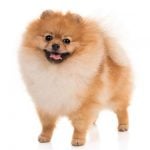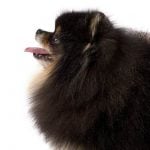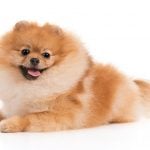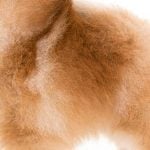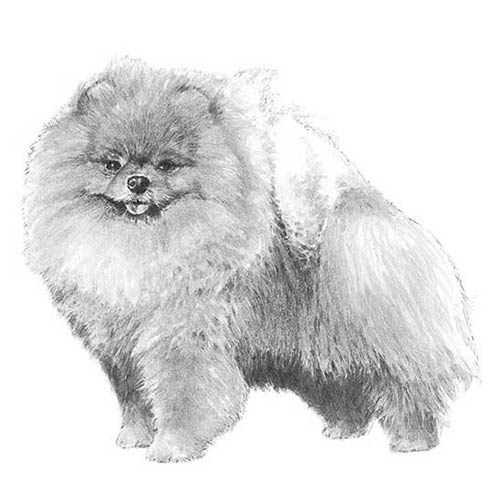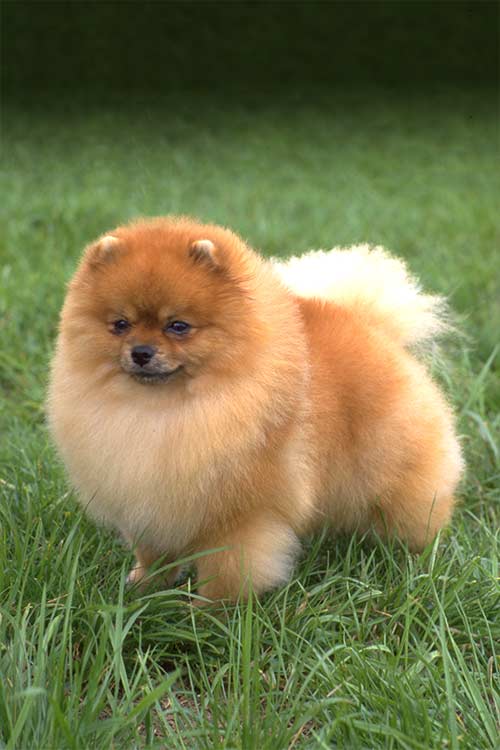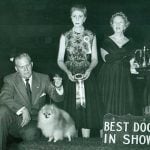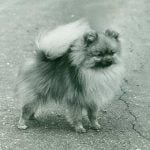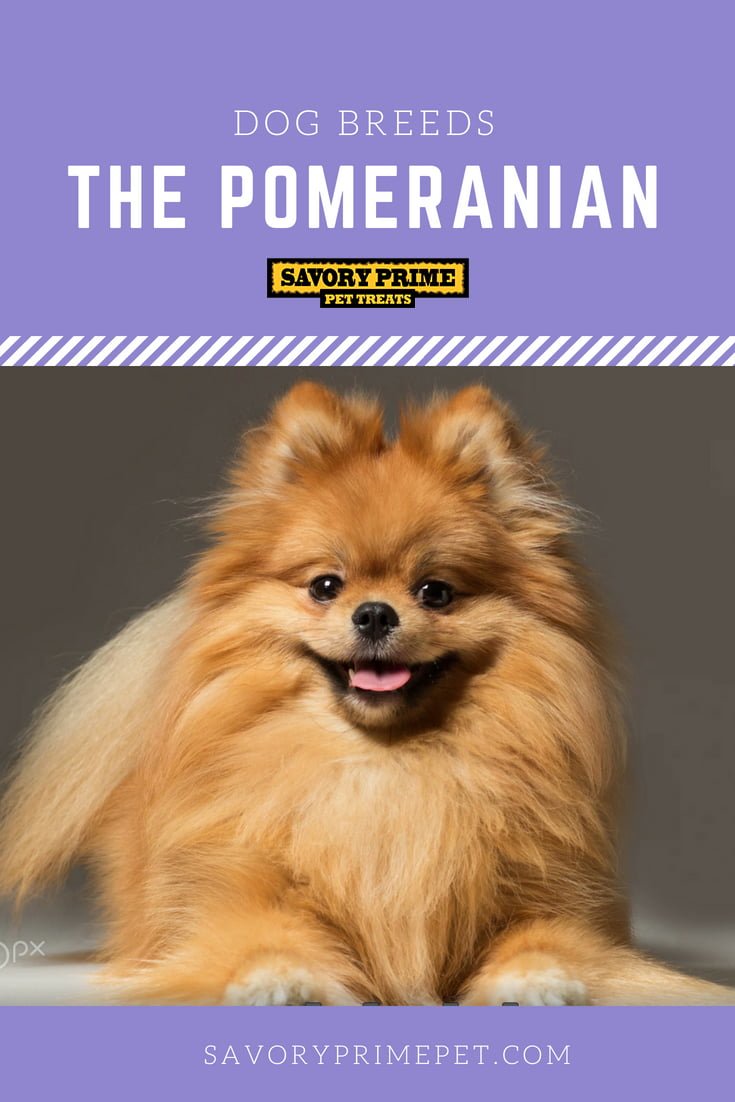The tiny Pomeranian, long a favorite of royals and commoners alike, has been called the ideal companion. The glorious coat, smiling, foxy face, and vivacious personality have helped make the Pom one of the world’s most popular toy breeds.
- Temperament:Inquisitive, Bold, Lively
- AKC Breed Popularity: Ranks 22 of 194
- Height: 6-7 inches
- Weight: 3-7 pounds
- Life Expectancy: 12-16 years
- Group: Toy Group
About the Pomeranian
The Pomeranian combines a tiny body (no more than seven pounds) and a commanding big-dog demeanor. The abundant double coat, with its frill extending over the chest and shoulders, comes in almost two dozen colors, and various patterns and markings, but is most commonly seen in orange or red.
Alert and intelligent, Pomeranians are easily trained and make fine watchdogs and perky pets for families with children old enough to know the difference between a toy dog and a toy. Poms are active but can be exercised with indoor play and short walks, so they are content in both the city and suburbs. They will master tricks and games with ease, though their favorite activity is providing laughs and companionship to their special human.
GENERAL APPEARANCE
The Pomeranian is a compact, short-backed, active toy dog of Nordic descent. The double coat consists of a short dense undercoat with a profuse harsh-textured longer outer coat. The heavily plumed tail is one of the characteristics of the breed. It is set high and lies flat on the back. He is alert in character, exhibits intelligence in expression, is buoyant in deportment, and is inquisitive by nature. The Pomeranian is cocky, commanding, and animated as he gaits. He is sound in composition and action.
HEAD
Head is in balance with the body, when viewed from above, broad at the back tapering to the nose to form a wedge.
Expression – may be referred to as fox-like, denoting his alert and intelligent nature. Eyes -dark, bright, medium sized, and almond shaped; set well into the skull with the width between the eyes balancing the other facial features. Eye rims are black, except self-colored in chocolate, beaver and blue.
BODY
Neck is set well into the shoulders with sufficient length to allow the head to be carried proud and high. Topline is level from withers to croup. Body is compact and well-ribbed. Chest – oval tapered extending to the point of elbows with a pronounced prosternum. Back – short-coupled, straight and strong. Loin – short with slight tuck-up. Croup is flat.
FOREQUARTERS
Shoulders – well laid back. Shoulder blade and upper arm length are equal. Elbows – held close to the body and turn neither in nor out. Legs when viewed from the front are moderately spaced, straight and parallel to each other, set well behind the forechest. Height from withers to elbows approximately equals height from ground to elbow. Shoulders and legs are moderately muscled. Pasterns straight and strong. Feet- round, tight, appearing cat-like, well-arched, compact, and turn neither in nor out, standing well up on toes.
COAT
The Pomeranian is a double-coated breed. The body should be well covered with a short, dense undercoat with long harsh-textured guard hair growing through, forming the longer abundant outer coat which stands off from the body. The coat should form a ruff around the neck, framing the head, extending over the shoulders and chest.
HINDQUARTERS
Angulation balances that of the forequarters. Buttocks are well behind the set of the tail. Thighs – moderately muscled. Upper thigh and lower leg length are equal. Stifles – strong, moderately bent and clearly defined. Legs – when viewed from the rear straight and parallel to each other. Hocks when viewed from the side are perpendicular to the ground and strong. Feet same as forequarters.
CARE
Nutrition
The Pomeranian should do well on a high-quality dog food, whether commercially manufactured or home-prepared with your veterinarian’s supervision and approval. Any diet should be appropriate to the dog’s age (puppy, adult, or senior). Some dogs are prone to getting overweight, so watch your dog’s calorie consumption and weight level. Treats can be an important aid in training, but giving too many can cause obesity. Learn about which human foods are safe for dogs, and which are not. Check with your vet if you have any concerns about your dog’s weight or diet. Clean, fresh water should be available at all times.
Grooming
The Pomeranian’s profuse double coat is one of his most distinguishing features. Frequent brushing is necessary to maintain the beautiful coat that we admire. Brush through the dog with a pin brush and a slicker brush down to the skin once a week to keep the hair from matting. Pomeranians are active dogs, so it is important that their nails are kept short. It is highly recommended that you find a groomer to do a full groom—including bath, brushing, ears, nails, and anal glands—every four to six weeks, if you are not comfortable with doing this at home. You should also pay close attention to the Pom’s teeth. It is a good idea to brush the teeth during their weekly grooming session.
Exercise
As much as Pomeranians enjoy being lapdogs and family companions, they do benefit from some exercise and enjoy the chance to run, play, and go for walks. Be sure to keep a close eye on your Pom when he or she is outside. They are notorious for escaping through small crevices or gaps in fencing, or climbing over short fencing. Small breeds like Pomeranians can be mistaken for rabbits or squirrels by large, predatory birds such as hawks and owls, so it is vital to keep a Pom under cover or stay with them at all times. When taking your Pom for a walk, be cautious of your surroundings. Other dogs who are not controlled can easily hurt your Pom.
Training
The Pom should be trained to walk on a leash early on and taught to come when called. Housebreaking can be a challenge, so consistency and patience are key. It is important to keep your Pom from jumping on and off couches or beds, as they can injure joints or even break a bone. Poms are alert and highly intelligent, and they enjoy and can excel in canine activities like agility, rally, and obedience, or working as therapy dogs.
Health
Pomeranians are generally healthy little dogs, and responsible breeders screen their stock for health conditions such as luxating patellas (kneecaps that slip out of place), hypothyroidism, collapsing tracheas, congestive heart failure, seizures, and alopecia X (black skin disease). The Orthopedic Foundation for Animals (OFA) is a registry that keeps health-screening information in a public database. Be sure to request to see copies of OFA results of the litter’s parents from the breeder when considering a puppy.
Recommended Health Tests from the National Breed Club:
- Patella Evaluation
- Cardiac Exam
- Ophthalmologist Evaluation
History
The Pomeranian is a miniaturized relation of the powerful spitz-type sled dogs of the Arctic. The breed is named for Pomerania, the area of northeastern Europe that is now part of Poland and western Germany. It was there, hundreds of years ago, that the Pom’s ancestors were bred down from their much bigger, burlier cousins.
The Pom, also known as the Zwergspitz in some countries, is the smallest of the spitz breeds. With their elegant appearance and regal bearing, you might say Poms are “fit for a queen”—and you’d be right. The Pom’s popularity is largely due to Queen Victoria, who became smitten with the breed while visiting Florence, Italy. When the dog-happy Dowager Queen returned to Britain with Poms in tow, the breed’s fame was assured.
Victoria became a serious breeder and exhibitor of Poms. At the 1891 Crufts dog show, Victoria showed six of her breeding. One of her favorites, Windsor Marco, won first place in the breed. (A British historian wrote, “It would have been a brave judge to have placed her second.”) Victoria is credited for reducing the Pom’s size from about 30 pounds to their current toy stature. It was reported that as the aged queen lay dying in 1901, her favorite Pom, Turi, kept vigil at the foot of her bed.
Other historical figures of refined sensibilities who were Pom owners include Marie Antoinette, Emile Zola, and Wolfgang Amadeus Mozart.
Did You Know?
The Pomeranian is a member of the family of dogs known unofficially as the “Spitz Group”
The name, naturally, traces to Pomerania, not as a point of origin, but possibly because the breed may have been in process of downsizing there.
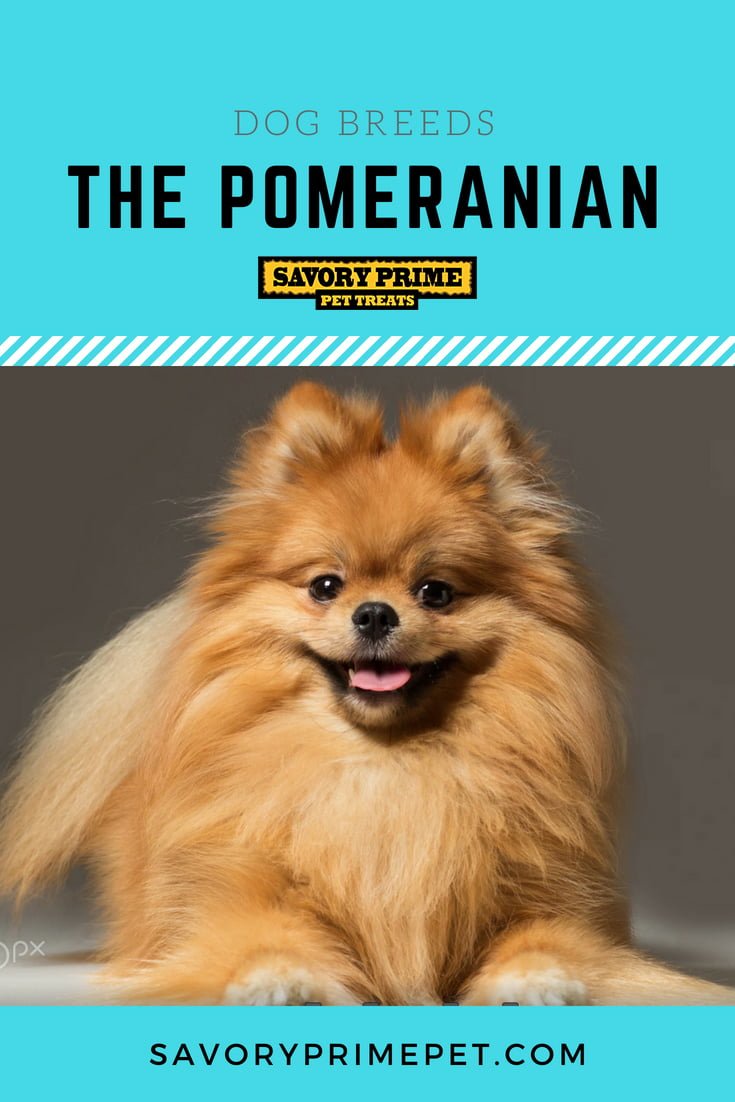
Recent Pet Posts
Blog Categories
Product categories
- Accessories (7)
- Chicken & Veggie Wraps (8)
- Grillers Jerky Tenders (4)
- Jerky Treats (10)
- Made in the USA (9)
- Non-Rawhide Treats (28)
- Beggar Bone (11)
- Bully Sticks (4)
- Butcher Bone (4)
- Cod Skin Fish Treats (3)
- Pork Skin Twists (2)
- Pressed Rawhide Bones & Rolls (16)
- Bones & Rolls (6)
- Pressed Rawhide Bulk (6)
- Twist Sticks (4)
- Savory Munchies (13)
- Supreme Bones & Rolls (48)
- American Rawhide Bulk (16)
- Rawhide Bones (14)
- Rawhide Chips (6)
- Rawhide Rolls & Sticks (12)
- Uncategorized (8)

